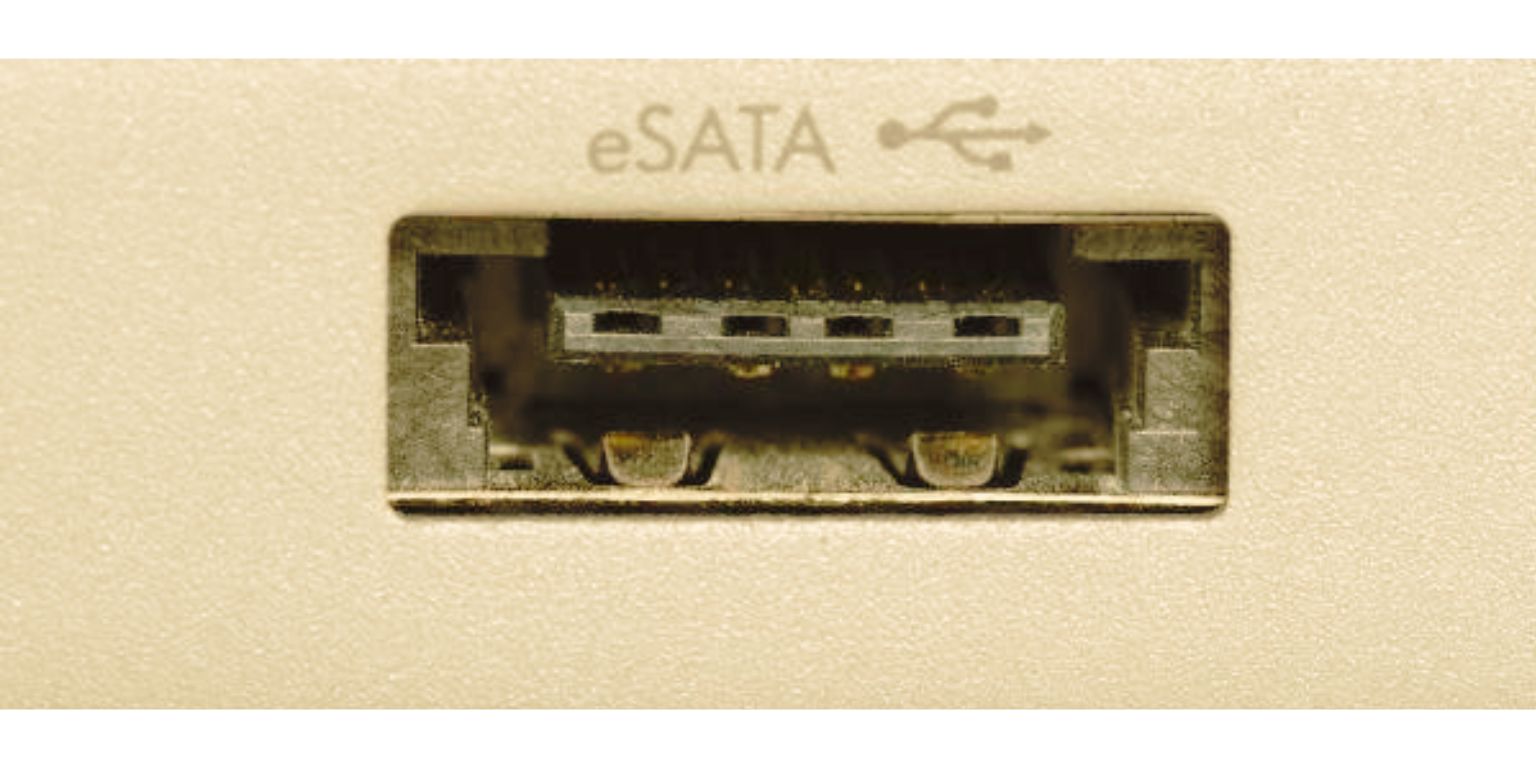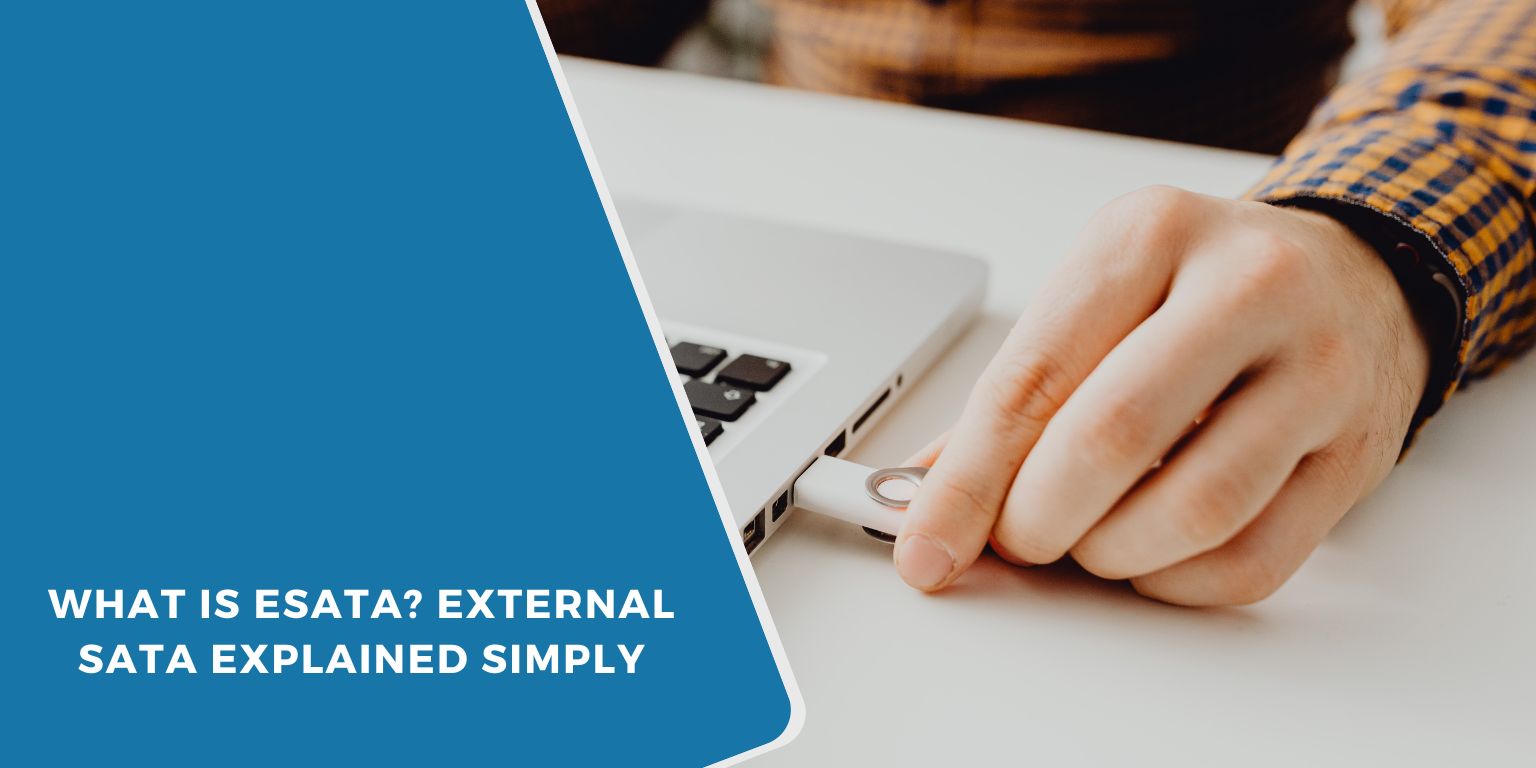If you’ve ever seen a port labelled “eSATA” on your laptop or external hard drive, you may have wondered what it’s for. It sounds a bit technical, but it’s not too hard to understand once you break it down.
eSATA stands for External Serial ATA. It’s a type of connector designed to link external storage drives to your computer quickly. It offers fast speeds, similar to the ones you get when using an internal SATA cable inside your PC. While it’s not as common now as USB or Thunderbolt, it still works well if your device supports it.
What Is eSATA and How Does It Work?
 eSATA is an external version of SATA, which is a common interface for connecting hard drives and solid-state drives inside computers. Instead of keeping the drive inside your system, eSATA lets you use it outside while keeping the same fast speed.
eSATA is an external version of SATA, which is a common interface for connecting hard drives and solid-state drives inside computers. Instead of keeping the drive inside your system, eSATA lets you use it outside while keeping the same fast speed.
This type of port was proper before USB 3.0 and Thunderbolt became popular. It allowed users to move big files like videos or system backups without slowdowns. And because it connects directly to the motherboard’s SATA controller, the performance was better than older USB ports.
eSATA vs USB: What’s the Difference?
Here’s a quick comparison of eSATA with other ports people often use for external drives.
| Feature | eSATA | USB 3.0 / 3.1 | Thunderbolt 3 / 4 |
|---|---|---|---|
| Speed | Up to 6 Gbps | Up to 5 to 10 Gbps | Up to 40 Gbps |
| Power Support | No | Yes | Yes |
| Compatibility | Limited | Very high | High with adapters |
| Common Today | Rare | Very common | Growing fast |
What Devices Use eSATA?
eSATA was more common several years ago, but it still shows up on some older or specialty equipment. Here are some devices where you might see it:
- External hard drives made between 2005 and 2018
- Hard drive docking stations used for cloning or backups
- Desktop PCs with large media storage
- Some older laptops with multiple port types
If both your PC and storage device have eSATA ports, it’s still a fast and reliable way to move files.
Is eSATA Still Useful Today?
eSATA isn’t gone, but it’s not very common in new computers. Most people now use USB 3.1, USB-C, or Thunderbolt because they’re easier to plug in and more flexible.
However, if your setup already includes eSATA, there’s no need to replace it. It still delivers fast speeds and gets the job done for large data transfers, especially in professional or home media environments.
Pros and Cons of eSATA
Before deciding if eSATA is right for you, it helps to look at its pros and cons. Here are some points to consider.
Pros:
- Transfers large files quickly, making it useful for backups or videos
- Keeps full SATA speed, unlike some older USB versions
- Offers a strong and stable physical connection
- Works excellent for stationary setups that don’t need to move around
Cons:
- Needs a separate power cable, which adds extra cords to manage
- Not found on many new laptops or modern external drives
- Doesn’t support extra features like charging or video, like USB-C
- It may confuse users who expect simple plug-and-play with no setup
Final Thoughts: Should You Still Use eSATA?
eSATA had its moment and served users who wanted fast file transfers without needing to open their PC. It’s still useful today if your computer supports it, especially for tasks such as large backups, video libraries, or old storage gear.
But for most users, it makes more sense to use USB 3.0, USB-C, or Thunderbolt. These ports are more flexible, easier to use, and found on nearly every new device.
Still, if you’ve got the tools, don’t throw them away just yet. eSATA still works well, and for the right person, it’s a reliable option.


